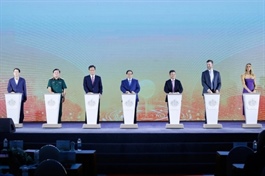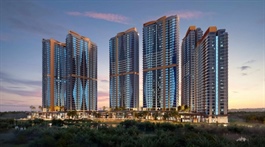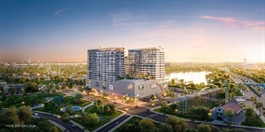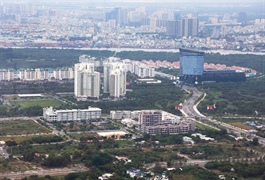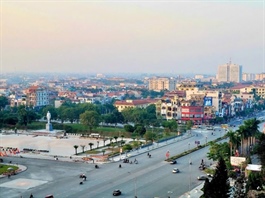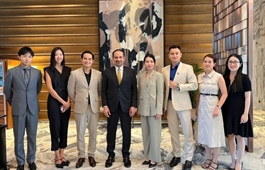Foreign investors raise concerns over Vietnam’s real estate market
Foreign investors raise concerns over Vietnam’s real estate market
A conference held by NAIVietnam in Ho Chi Minh City on May 22 saw the participation of major business leaders in the real estate industry from around the world.
|
During a panel discussion, Lucas Ignatius Loh Jen Yuh, CEO of NamLong Group, said, "Nam Long started as a construction company 30 years ago and then ventured into the real estate industry, developing real estate with vision in combination with provincial planning."
Urban areas in Long An, Dong Nai, and Ho Chi Minh City have been developed by Nam Long under the integrated urban area model. Meanwhile, commercial property and community amenities are indispensable when developing urban areas.
"Integrated urban area development requires our close supervision during the implementation of current projects, including the development of retail, office, and hospitality real estate segments. In particular, we will cooperate with other partners to develop complete projects," said Yuh.
Yuh further added that Nam Long is closely following the suburbanisation trend of residents in major urban areas to develop satellite urban areas surrounding Ho Chi Minh City.
"Nam Long's strategic vision is still commercial real estate projects. However, there will be few new projects in the pipeline due to the rapid rate of urbanisation, reaching 70 per cent in urban areas. As a result, Nam Long is embracing changes with strategic orientation to generate new revenue streams in the long term," he declared.
In addition, Nam Long will expand its investment portfolio to build a supporting ecosystem for urban areas when the company starts to enter the next stage of development.
However, he pointed out some barriers to Vietnam’s real estate market, such as technical infrastructure. For example, it takes much time to travel through a short route in major cities. Therefore, it is very difficult to develop the market from the downtown to outskirts areas following the suburbanisation trend.
"We cannot live in an urban area adjacent to the city, but it takes three to four hours to travel to work in the downtown every day, despite the distance of only about 50km. In my opinion, transportation infrastructure is the biggest limitation of Vietnam’s real estate market," added Yuh.
Under the government’s urban consolidation plans, localities are evolving into megacities, multicentre hubs, and revitalised suburban areas, with suburbs poised to become more appealing than traditional downtown cores. Meanwhile, Ho Chi Minh City, with its population exceeding 10 million, faces mounting congestion on key transit routes, highlighting the urgency of these spatial reforms.
In the same vein, Paul Tonkes, deputy director of Indochina Kajima, said, "The market operates on two tiers – Tier-1 in major cities and Tier-2 in neighbouring provinces. In Tier-1, transport networks are tightly integrated with urban centres and industrial zones, and services are more concentrated. Yet despite this advantage, Tier-1’s infrastructure remains outdated. Chronic underinvestment and worsening congestion are now stifling its potential."
"The Tier-2 market industrial zones are developing strongly," Tonkes said. "However, the infrastructure is also too cramped. Meanwhile, Vietnam is emerging as a significant player in the global supply chain, but could face problems as it takes too much time to transport goods from factories to seaports. The distance is not too far, but the main cause is logistical bottlenecks," Tonkes added.
During the workshop, Andrew Bruce, owner and manager of NAI Harcourts North Shore (New Zealand), said, "In the New Zealand market, there will be land ownership, which enables people to build houses and secure a sizeable amount of capital from banks. However, in Vietnam, investors have to lease land while it is difficult to borrow capital."
Alex Waddey, president and CEO of NAI Global, said, "Land lease is currently a barrier that makes it difficult for investors to access capital."
Providing the perspective of a Chinese investor, Bjarne Bauer, managing partner of NAI Sofia Group Shanghai, said, "Land-lease contracts come with numerous fees, while outright land purchases are far simpler. For office and retail investments, leases offer little advantage, which is why they’re less attractive to us."
"But the bigger hurdle in Vietnam is the legal process. Even after securing land, approvals for real estate projects can take years, and with market volatility so high, delays become a major risk. To adapt, foreign firms must build longer timelines into their strategies," he said.
- 16:58 23/05/2025




